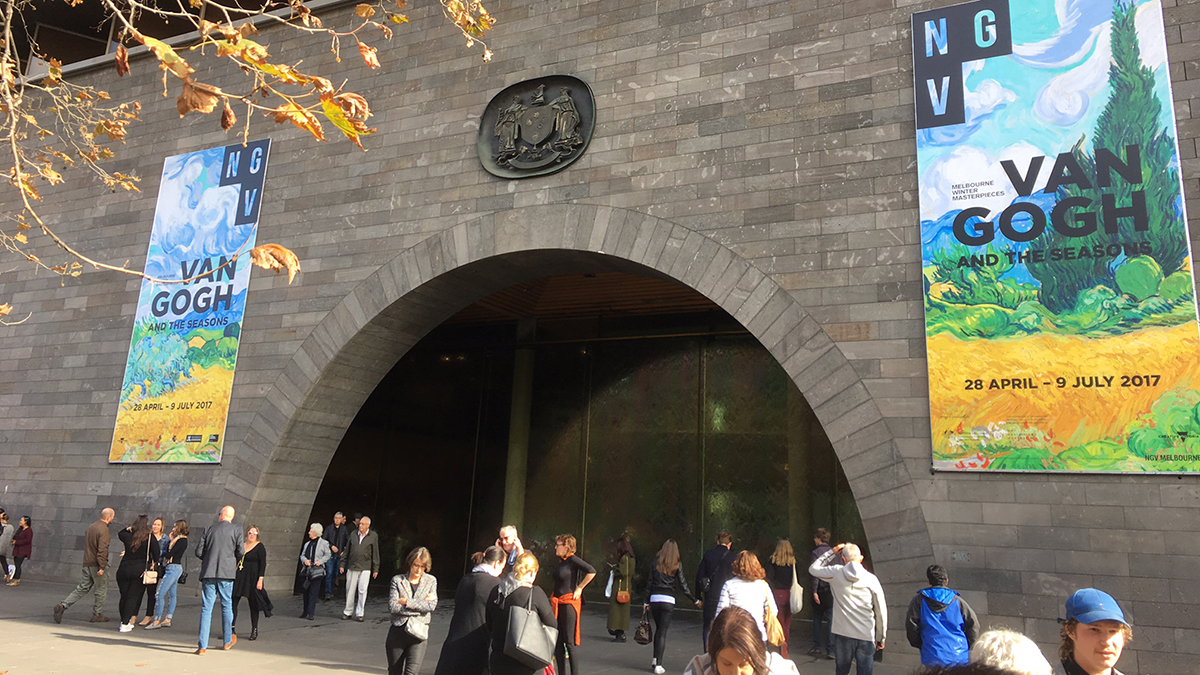“If one looks closely, one sees that there’s a kind of gospel on the first day of Spring.” So said nineteenth-century Dutch painter Vincent van Gogh. I understood the irony of appreciating this statement in the context in which I came across it. We had pre-purchased our tickets, turned our backs on a sunny, mild, and quite beautiful autumn afternoon, and waited in line with hundreds of others for nearly an hour to see the artistic representations of the four seasons through van Gogh’s work.
There was a kind of gospel to be found as we explored the painting and life of the troubled van Gogh. The son of a church minister, a one-time missionary, a struggling artist, and victim of mental illness at just 37, his paintings and life engaged deeply with the natural world, wrestling with light and dark, colour and life, death and re-birth, loneliness and hope.
Belying his international renown today, van Gogh was the struggling artist in many ways. Totally devoted to his art in the last few years of his life, he rarely sold paintings, spent time in an asylum, and was largely supported by his brother. As we waited patiently for admission to the exhibition at Melbourne’s largest art gallery, I reflected on what an overwhelming surprise it would have been if van Gogh could have somehow been able to see forward 127 years after his death to a gallery on an autumn afternoon on the other side of the world.
Van Gogh’s understanding of his artistic calling was to engage deeply with the world, to share what he could see and feel of the world, and to tell something true about life. That his work continues to resonate today says much about its ultimate success. [pullquote]
But there is another aspect to thinking about the crowds this exhibition attracted: “Today’s museums attempt to draw in visitors by making claims for the rarity of the objects in their collections. They suggest that what they possess is not only good, but also unusual and very scarce. In contrast the true ideal of the museum should be to make what is good and important very normal and widely distributed. The energies of those who love art shouldn’t be devoted to piling up treasures behind high walls, but instead should be to spread the values found in works of art more widely through the world. The mission of the true art lover should be to reduce the relative importance of museums, in the sense that the wisdom and insight currently collected there shouldn’t be so jealously guarded and fetishised, but instead scattered generously and promiscuously across life.”1
It isn’t that places that collect beauty and truth are unimportant, but that their role should be to use these resources beyond their walls. Like a city on a hill, the gallery cannot be hidden. It becomes a landmark in the city, a destination for a kind of pilgrimage. If it is faithful to its task, this will be an almost inevitable result.
But there is another model—as urged by philosophers de Botton and Armstrong, quoted above—offering a “generous and promiscuous” seasoning to all of life, culture, and society. The mission of the true lover is to salt and season the world around us with the wisdom, truth, and beauty we have found in our collections of faith and goodness (see Matthew 5:13). The importance of the gallery or museum should perhaps even decrease, so its true mission can increase (see John 3:30).
After spending time with van Gogh’s paintings, the autumn afternoon, with its changing leaves and fading sunshine, looks different to those of us who emerge from the gallery onto the city street. The truth and beauty van Gogh shared in his work changes the way we see our world. That’s the real point of visiting a gallery, or a church: to change us and our way of seeing, acting, and believing in our lives. As agents of beauty, we are to be alert to the gospel around us and to share the living truth of what we have witnessed and learned, making it generously more common in our communities and our world.
Originally published at www.adventistreview.org.






